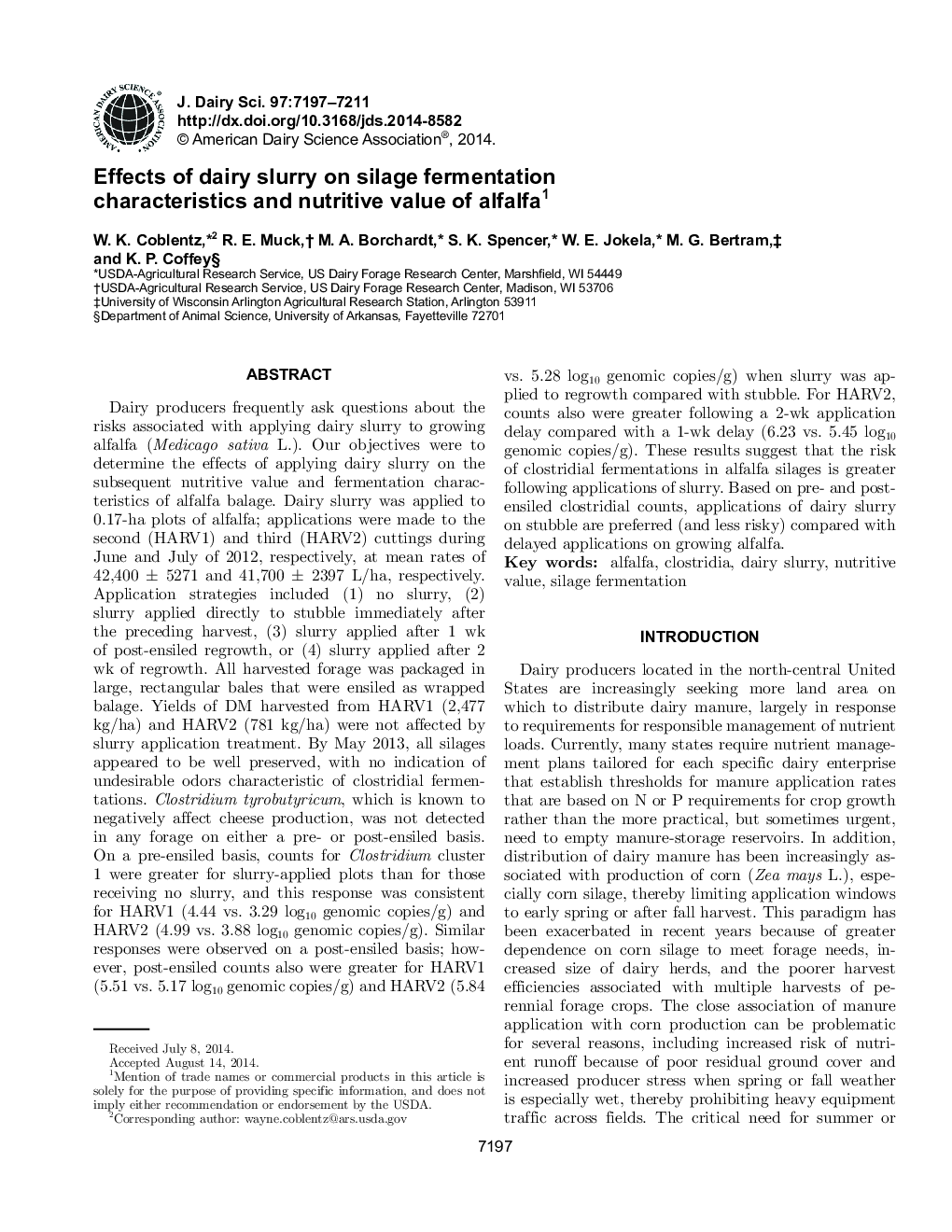| کد مقاله | کد نشریه | سال انتشار | مقاله انگلیسی | نسخه تمام متن |
|---|---|---|---|---|
| 10976938 | 1108045 | 2014 | 15 صفحه PDF | دانلود رایگان |
عنوان انگلیسی مقاله ISI
Effects of dairy slurry on silage fermentation characteristics and nutritive value of alfalfa1
ترجمه فارسی عنوان
اثرات مایع شیری بر ویژگی های تخمیر سیلیس و ارزش غذایی یونجه 1
دانلود مقاله + سفارش ترجمه
دانلود مقاله ISI انگلیسی
رایگان برای ایرانیان
کلمات کلیدی
موضوعات مرتبط
علوم زیستی و بیوفناوری
علوم کشاورزی و بیولوژیک
علوم دامی و جانورشناسی
چکیده انگلیسی
Dairy producers frequently ask questions about the risks associated with applying dairy slurry to growing alfalfa (Medicago sativa L.). Our objectives were to determine the effects of applying dairy slurry on the subsequent nutritive value and fermentation characteristics of alfalfa balage. Dairy slurry was applied to 0.17-ha plots of alfalfa; applications were made to the second (HARV1) and third (HARV2) cuttings during June and July of 2012, respectively, at mean rates of 42,400 ± 5271 and 41,700 ± 2397 L/ha, respectively. Application strategies included (1) no slurry, (2) slurry applied directly to stubble immediately after the preceding harvest, (3) slurry applied after 1 wk of post-ensiled regrowth, or (4) slurry applied after 2 wk of regrowth. All harvested forage was packaged in large, rectangular bales that were ensiled as wrapped balage. Yields of DM harvested from HARV1 (2,477 kg/ha) and HARV2 (781 kg/ha) were not affected by slurry application treatment. By May 2013, all silages appeared to be well preserved, with no indication of undesirable odors characteristic of clostridial fermentations. Clostridium tyrobutyricum, which is known to negatively affect cheese production, was not detected in any forage on either a pre- or post-ensiled basis. On a pre-ensiled basis, counts for Clostridium cluster 1 were greater for slurry-applied plots than for those receiving no slurry, and this response was consistent for HARV1 (4.44 vs. 3.29 log10 genomic copies/g) and HARV2 (4.99 vs. 3.88 log10 genomic copies/g). Similar responses were observed on a post-ensiled basis; however, post-ensiled counts also were greater for HARV1 (5.51 vs. 5.17 log10 genomic copies/g) and HARV2 (5.84 vs. 5.28 log10 genomic copies/g) when slurry was applied to regrowth compared with stubble. For HARV2, counts also were greater following a 2-wk application delay compared with a 1-wk delay (6.23 vs. 5.45 log10 genomic copies/g). These results suggest that the risk of clostridial fermentations in alfalfa silages is greater following applications of slurry. Based on pre- and post-ensiled clostridial counts, applications of dairy slurry on stubble are preferred (and less risky) compared with delayed applications on growing alfalfa.
ناشر
Database: Elsevier - ScienceDirect (ساینس دایرکت)
Journal: Journal of Dairy Science - Volume 97, Issue 11, November 2014, Pages 7197-7211
Journal: Journal of Dairy Science - Volume 97, Issue 11, November 2014, Pages 7197-7211
نویسندگان
W.K. Coblentz, R.E. Muck, M.A. Borchardt, S.K. Spencer, W.E. Jokela, M.G. Bertram, K.P. Coffey,
